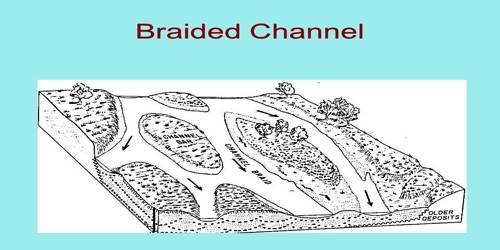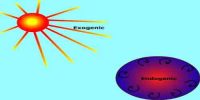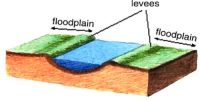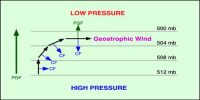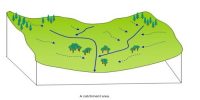Braided Channels: Depositional Landforms
When rivers carry coarse material, there can be selective deposition of coarser materials causing a formation of a central bar which diverts the flow towards the banks; and this flow increases lateral erosion on the banks. A braided channel is one that is divided into smaller channels by temporary islands called eyots. Braided channels tend to form in rivers that have a significant amount of sedimentary load, a steep profile and where discharge regularly fluctuates. When the river’s carrying capacity is exceeded the river deposits its load into the channel and eyots form.
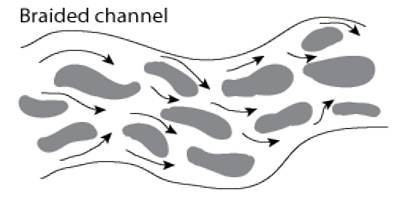
As the valley widens, the water column is reduced and more and more materials get deposited as islands and lateral bars developing a number of separate channels of water flow. Deposition and lateral erosion of banks are essential for the formation of the braided pattern. Or, alternatively, when a discharge is less and load is more in the valley, channel bars, and islands of sand, gravel and pebbles develop on the floor of the channel and the water flow is divided into multiple threads. These thread-like streams of water rejoin and subdivide repeatedly to give a typical braided pattern (Figure).
